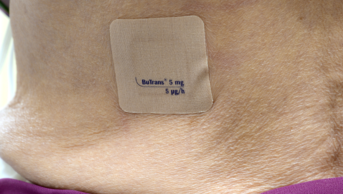
Shutterstock.com
The NHS is paying double the initial cost to wholesalers for Category M generic drugs, according to a report commissioned by the British Generic Manufacturers Association (BGMA), the trade body representing generics manufacturers.
The report, written by economics consultancy Oxera and published by the (BGMA) on 26 June 2019, found that drug tariff reimbursement prices for Category M products are, on average, 1.93 times higher than the selling price charged by the manufacturer.
The analysis used actual selling prices for 485 Category M products over 2016 and 2017, and matched the data with tariff prices from the NHS Electronic Drug Tariff Data.
The report said that for around 63% of the products analysed, the reimbursement price was between 40% and 100% higher than the manufacturer’s actual selling price.
“[The analysis] also illustrates, however, that for a sizeable proportion of observations the difference was much larger (up to around 190% higher — i.e. the reimbursement price was 2.9 times the manufacturer selling price in some cases),” the report added.
Avantika Chowdhury, a competition specialist who led the work at Oxera, said that while the findings show that the manufacturers’ selling prices are on average half the price listed on the drug tariff, how the profit “is exactly split will vary, depending on the product”.
But she added that “there’s some analysis, which was done by the BGMA, which shows it’s a 50/50” split, with wholesalers receiving half of the profit and pharmacies receiving the other half.
The report notes that the BGMA compared the “average prices paid by independent pharmacies … and Scheme M actual manufacturer selling prices since 2012” for 50 products to find an “approximate equal division [of the profit] between wholesalers and pharmacies”.
Mike Hewitson, managing director of Beaminster Pharmacy in Dorset, said a price mark-up is “how the wholesaler system operates”.
But he added: “The thing that’s concerning me gravely at the moment is the stability and fairness of that margin that the wholesalers are adding.”
He said that the margins survey, which determines how much of a margin pharmacies have retained through Category M reimbursement, “does require wholesale margins to be fairly static in order for the government to be assured that it’s delivering the right amount of funding to pharmacy”.
“If wholesale margins rise, for example, then money which should be going to pharmacy could be ending up in the pockets of wholesalers,” he explained.
“We’ve got so many examples where prices are jumping two-, three- or four-fold overnight. I’ve seen ten-fold overnight and there’s no explanation for it,” he said.
“There’s a really strong case for more oversight and regulation of wholesale sector in particular.”
The BGMA’s report comes after a report by the National Audit Office found “unexpected increases in wholesalers’ margins” in 2017, “which it could not fully explain”.
The Pharmaceutical Journal has approached the Healthcare Distribution Association, which represents wholesalers, for comment.


